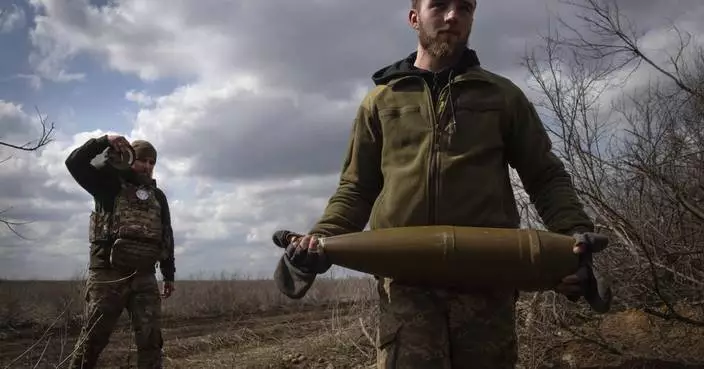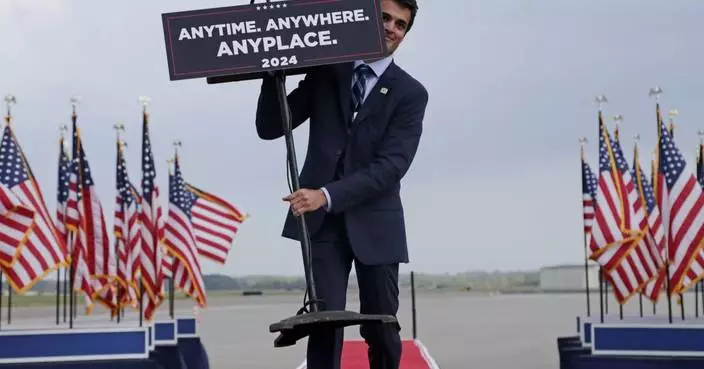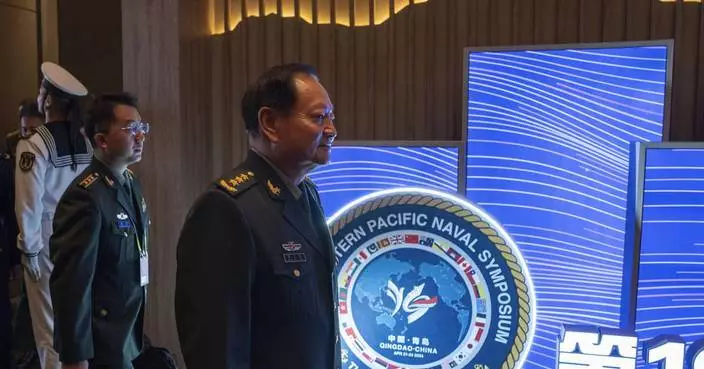The Latest on the state visit by Australian Prime Minister Scott Morrison (all times local):
9:35 a.m.
President Donald Trump says in a welcoming ceremony for Australian Prime Minister Scott Morrison that "today we celebrate the long-cherished and unwavering friendship between the United States and Australia."
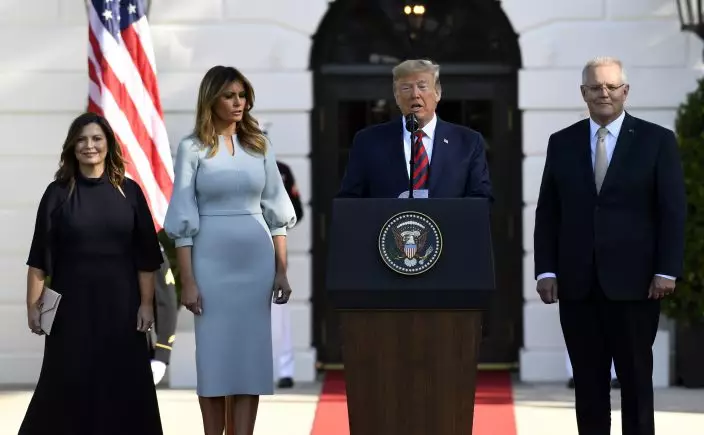
President Donald Trump speaks as he and first lady Melania Trump welcome Australian Prime Minister Scott Morrison and his wife Jenny Morrison during a state arrival ceremony on the South Lawn of the White House in Washington, Friday, Sept. 20, 2019. (AP PhotoSusan Walsh)
Trump and Morrison will participate in a day filled with meetings, a joint press conference and a lavish state dinner, the second one of Trump's presidency.
Trump says tonight's Rose Garden state dinner "will be quite something."
Morrison told the president in reply, "thanks mate."
Morrison says the Australian delegation brings with it the thanks and respect of 25 million Australians for the U.S.
The two leaders are seeking to demonstrate a strong alliance with Morrison saying the world is a better place with the United States and that the two nations "see the world through the same lens."
The welcoming ceremony included Marine Band performances of the national anthem of both countries and a 19-gun salute and inspection of troops.
12:30 a.m.
President Donald Trump and first lady Melania Trump are welcoming Australian Prime Minister Scott Morrison and his wife, Jenny, to the White House with a pomp-filled military arrival ceremony on the South Lawn Friday morning.
Morrison is just the second world leader to be granted the high diplomatic honor of a state visit during the Trump administration.
The leaders will meet for talks and face journalists at a joint news conference in the White House East Room. Morrison will also be treated to lunch at the State Department.
They will cap the night with an opulent state dinner beneath the stars in a Rose Garden arrayed in shades of green and gold in tribute to his Australia's national colors.
NEW DELHI (AP) — The hugely popular Chinese app TikTok may be forced out of the U.S., where a measure to outlaw the video-sharing app has won congressional approval and is on its way to President Biden for his signature.
In India, the app was banned nearly four years ago. Here's what happened:
In June 2020, TikTok users in India bid goodbye to the app, which is operated by Chinese internet firm ByteDance. New Delhi had suddenly banned the popular app, alongside dozens other Chinese apps, following a military clash along the India-China border. Twenty Indian and four Chinese soldiers were killed, and ties between the two Asian giants plunged to a new low.
The government cited privacy concerns and said that Chinese apps pose a threat to India’s sovereignty and security.
The move mostly drew widespread support in India, where protesters had been calling for a boycott of Chinese goods since the deadly confrontation in the remote Karakoram mountain border region.
“There was a clamour leading up to this, and the popular narrative was how can we allow Chinese companies to do business in India when we’re in the middle of a military standoff,” said Nikhil Pahwa, a digital policy expert and founder of tech website MediaNama.
Just months before the ban, India had also restricted investment from Chinese companies, Pahwa added. “TikTok wasn’t a one-off case. Today, India has banned over 500 Chinese apps to date.”
At the time, India had about 200 million TikTok users, the most outside of China. And the company also employed thousands of Indians.
TikTok users and content creators, however, needed a place to go — and the ban provided a multi-billion dollar opportunity to snatch up a big market. Within months, Google rolled out YouTube Shorts and Instagram pushed out its Reels feature. Both mimicked the short-form video creation that TikTok had excelled at.
“And they ended up capturing most of the market that TikTok had vacated,” said Pahwa.
In India, TikTok content was hyperlocal, which made it quite unique. It opened a window into the lives of small-town India, with videos coming from tier 2 and 3 cities that showed people doing tricks while laying down bricks, for example.
But for the most part, content creators and users in the four years since the ban have moved on to other platforms.
Winnie Sangma misses posting videos on TikTok and earning a bit of money. But after the ban, he migrated to Instagram and now has 15,000 followers. The process, for the most part, has been relatively painless.
“I have built up followers on Instagram too, and I am making money from it, but the experience isn’t like how it used to be on TikTok,” he said.
Rajib Dutta, a frequent scroller on TikTok, also switched to Instagram after the ban. “It wasn’t really a big deal,” he said.
The legislation to outlaw the app has won congressional approval and now awaits a signature from Biden.
The measure gives ByteDance, the app’s parent company, nine months to sell it, and three more if a sale is underway. If this doesn’t happen, TikTok will be banned. It would take at least a year before a ban goes into effect, but with likely court challenges, it could stretch longer.
In India, the ban in 2020 was swift. TikTok and other companies were given time to respond to questions on privacy and security, and by January 2021, it became a permanent ban.
But the situation in the U.S. is different, said Pahwa. “In India, TikTok decided not to go to court, but the U.S. is a bigger revenue market for them. Also, the First Amendment in America is fairly strong, so it’s not going to be as easy for the U.S. to do this as it was for India,” he said, in reference to free speech rights in the U.S. Constitution.
As Chinese apps proliferate across the world, Pahwa says countries need to assess their dependency on China and develop a way to reduce it as the apps can pose a national security risk.
The app is also banned in Pakistan, Nepal and Afghanistan and restricted in many countries in Europe.
“Chinese intelligence law and its cybersecurity law can allow Chinese apps to work in the interest of their own security. That creates a situation of distrust and it becomes a national security risk for others,” said Pahwa.
“There should be different rules for democratic countries and for authoritarian regimes where companies can act as an extension of the state,” he added.
—-
This story corrects the expert's erroneous reference to Fourth instead of First Amendment.
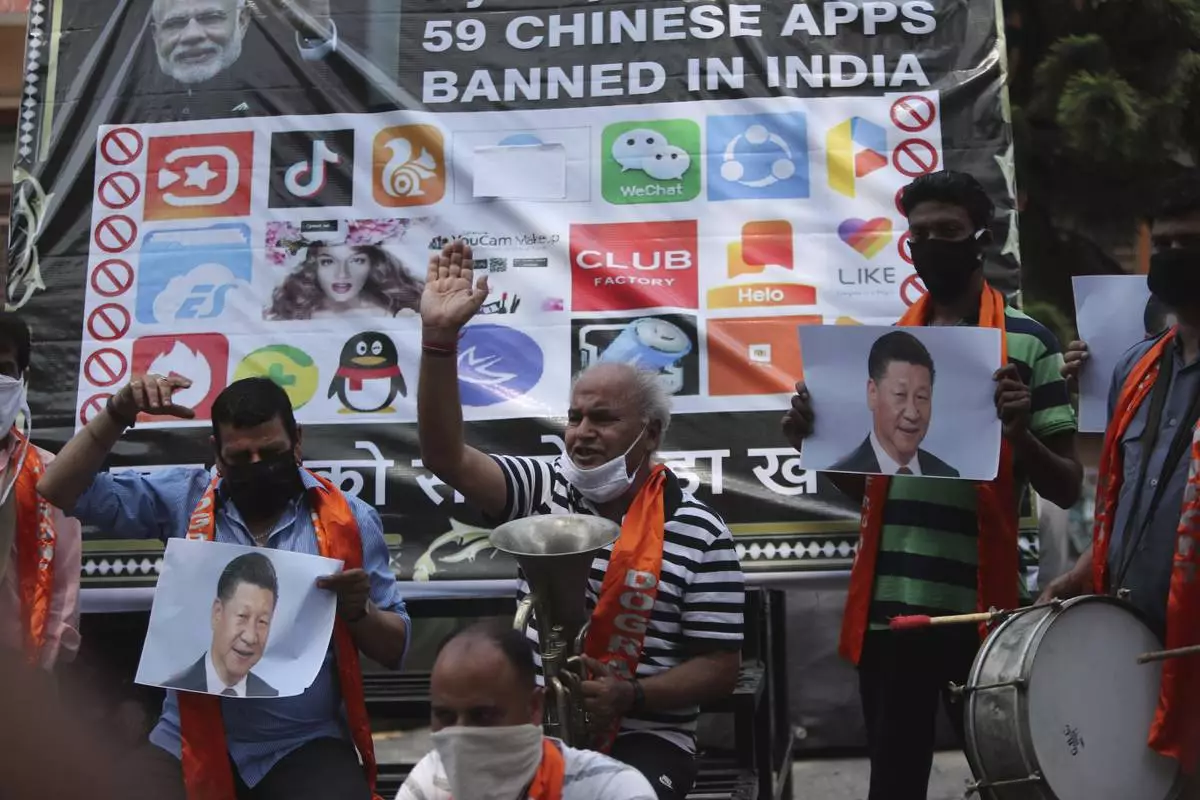
FILE- Activists of Jammu and Kashmir Dogra Front shout slogans against Chinese President Xi Jinping next to a banner showing the logos of TikTok and other Chinese apps banned in India during a protest in Jammu, India, July 1, 2020. (AP Photo/Channi Anand, File)









